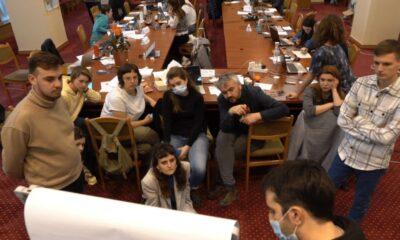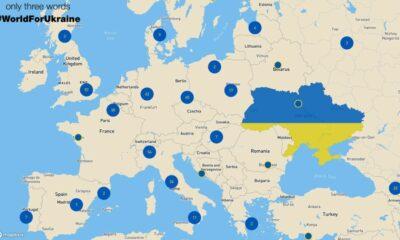Economy
Moldova facing price shock from Gazprom
Reading Time: 3 minutes Gazprom’s price hike to Moldova has political ramifications
The Russian government’s offer of cheap gas to Moldova, in return for military basing rights (“Cheap Gas for Basing Rights: Russia Offers Ukrainian-Type Deal to Moldova,” EDM, February 4) aims to pressure Moldova’s governing Alliance for European Integration (AEI). That government was confirmed in office in January 2011, following the November 2010 parliamentary elections. Moscow seeks to exploit Moldova’s payment difficulties with Gazprom, as well as to undermine the government politically ahead of upcoming elections.
Russia’s Gazprom has raised the price of gas for Moldova to $294 per one thousand cubic meters in the first quarter of 2011, up by 12 percent from the fourth quarter of 2010 (MoldovaGaz press release, January 1). The increase is in line with the December 2007 Russian-Moldovan agreement, whereby the price of gas for Moldova is rising each quarter until the end of 2011 to the level of European netback prices. Gazprom’s price hikes to Moldova in 2010 have generated a new round of consumer debts, on top of earlier arrears. These are still far smaller than Transnistria’s arrears (see below); but Gazprom threatens only Chisinau, not Tiraspol, with debt collection.
Gazprom owns 50 percent of MoldovaGaz, the gas trader and transmission operator. Transnistria’s authorities hold a stake of 13.5 percent, transferred to Gazprom in trust management. The Moldovan government owns 35 percent (with another 1 percent in unnamed private hands). Gazprom’s representatives dominate Moldovagaz’s board and top management.
Moldovagaz (i.e., Gazprom via this company) has asked Moldova’s energy regulatory agency to approve an 18 percent average price hike to end consumers, so as to cover not only Gazprom’s price increase, but also transmission and distribution service expenses inside Moldova (Infotag, February 1, 2; Moldpres, February 3). Whether politically motivated or not, the request (if granted) would signal further political trouble for the government.
The government is hard pressed to deal with Gazprom’s latest price hike, particularly against the backdrop of a constitutional crisis and possible serial rounds of new elections. The government must either pass the price increase on to consumers, or partly subsidize internal gas consumption through state budget deficits. In either case it would have to forego long-overdue investment in infrastructure upkeep and energy efficiency programs, the lack of which compounds the financial losses in a vicious circle.
Moldova’s end consumers have already absorbed two increases of 14 percent each, in January and May 2010. These have precipitated chain reactions of consumer payment defaults, jeopardizing the viability of gas and electricity utilities, and raising Moldovagaz’s indebtedness to Gazprom.
Further shocks to end consumers would damage the governing parties, ahead of upcoming elections. Moldova faces possibly four election rounds in the next few months: presidential election in the new parliament (required and long-overdue, but not scheduled); parliamentary elections again (required, if the parliament fails again to elect a head of state); country-wide local elections (on schedule in June); and a constitutional referendum (optional, as a means to overcome deadlock in parliament).
Under the contract for 2011, Gazprom will supply 3.3 billion cubic meters (bcm) of gas to Moldova, including 2 bcm to be delivered to TiraspolGaz for consumption in Transnistria (left-bank Moldova). The latter accounts for less than 20 percent of Moldova’s total population, but is better gasified and more industrialized than right-bank Moldova.
Total arrears to Gazprom (accumulated since the early 1990’s) had reached $2.2 billion in the first half of 2010, and have continued to increase. Gas consumed in Transnistria accounts for 86 percent of that total debt. Transnistria’s authorities do not dispute the debt itself, but argue that the Moldovan government should pay it, on the pretext that Gazprom had signed the supply contracts with MoldovaGaz, not with TiraspolGaz. By all available evidence, Gazprom and the Kremlin behind it tolerate this situation without objection.
In 2007 and 2010, Gazprom filed six suits against MoldovaGaz only, for “Moldovan” debt portions amounting to $384 million, owed in overwhelming proportion by Transnistria’s authorities. Gazprom chose the International Commercial Arbitration Court at the Chamber of Commerce of Russia for filing those suits. Gazprom apparently seeks a ruling that would entitle it to download Tiraspol’s arrears onto Chisinau, for debt-collection there. This would enable Gazprom to engage in brinkmanship, threatening Moldova with bankruptcy and MoldovaGaz with a full takeover (www.energetika.net, May 18, 2010). Moldova could in that case call the bluff, but Gazprom would have succeeded at least in complicating the government’s domestic electoral position vis-a-vis the leftist opposition.
Moldova provides massive transit service for Russian gas en route to Romania, Bulgaria, Greece, and European Turkey. The transit pipeline, which crosses Moldovan territory for a short stretch, has an annual capacity of up to 25 bcm. Gazprom has contracted for using 18.3 bcm of that capacity in 2011, to supply those four countries. The transit fee has just been increased by mutual decision to $3 per 1,000 cubic meters per 100 kilometers of Moldovan pipeline in 2011 (www.moldovagaz.md).
This transit fee remains well below levels prevailing in Europe. The fee had stood at $2.50 for at least 10 years through 2010 (Infotag, January 28, 31). Even with the raised fee, Moldova does not collect sufficient transit revenue for pipeline upgrades. The Moldovan government has a persuasive case for seeking a transit fee increase to European levels.
Economy
Moldova will receive a disbursement of 36 million euros as part of the the Economic Recovery Plan
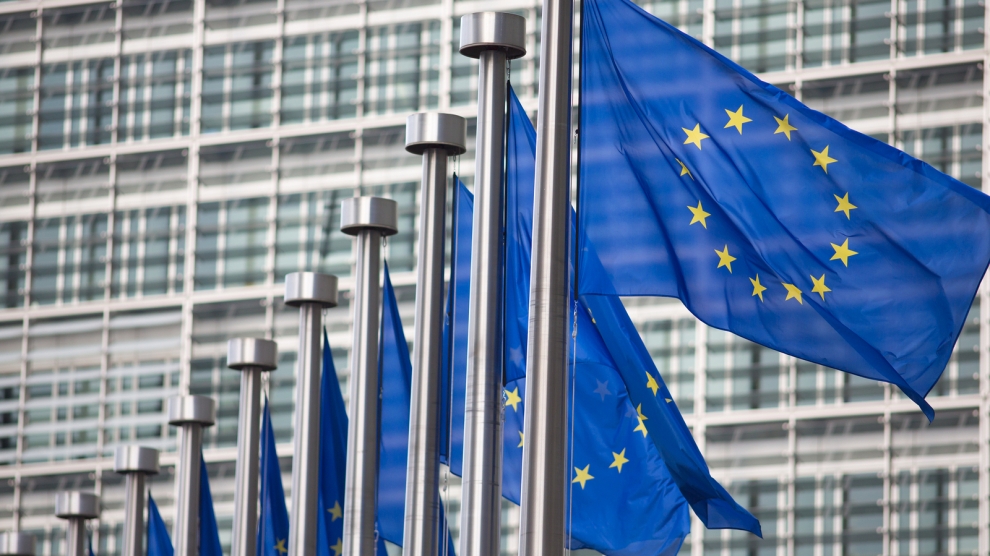
This week, the European Commission approved the disbursement of 36 million euros in grant money for the Republic of Moldova. The announcement was made by Deputy Director-General for Neighbourhood Policy and Enlargement Negotiations at the European Commission, Katarina Mathernova, who paid an official visit to the Republic of Moldova between September 13-15, together with Managing Director for Russia, Eastern Partnership, Central Asia, Regional cooperation and OSCE, at the European External Action Service, Michael Siebert.
The EU officials had meetings with President Maia Sandu, Minister of Foreign Affairs and European Integration, Nicu Popescu, Speaker of Parliament, Igor Grosu, Prime Minister of the country, Natalia Gavrilita, as well as key representatives of Government, international financial institutions and the civil society, according to a press release issued by the Delegation of the European Union to the Republic of Moldova.
Beside such topics as the EU-Moldova relations and prospects, the priorities of the reform agenda of the new Moldovan Government, preparations for the Eastern Partnership Summit at the end of the year and the Transnistrian conflict settlement, the officials also discussed the EU assistance in support of reforms and the Economic Recovery Plan for Moldova, which was announced in June with a total EU support of 600 million euros over the next 3 years.
“The first measures under the Economic Recovery Plan will shortly materialize, with the expected disbursement of 36 million euros in grant money under budget support programmes to support the authorities’ efforts to fight against the consequences of the pandemic. Moldova can count on EU’s assistance on its path to reforms and to recovery, bringing tangible results to citizens,” Katarina Mathernova stated.
The plan is based on assistance provided by the European Union through various bilateral and regional instruments, aiming to mobilize the funds in the form of grants, loans, guarantees and macro-financial assistance.
“The Economic Recovery Plan for the Republic of Moldova involves much more, not just this financial support provided immediately. It must help digital transformation, strengthen infrastructure, energy efficiency, education and support small and medium-sized enterprises,” the EU official also said.
As Prime Minister Natalia Gavrilita informed, “The Economic Recovery Plan and the 5 flagship initiatives for Moldova in the Eastern Partnership will directly contribute to the reform and consolidation of institutions, stimulate long-term socio-economic development, bring direct benefits to citizens, and unleash new economic opportunities through promoting the green agenda and digitization. Small and medium-sized enterprises (SMEs) have been hit hard by the crisis. Promoting and diversifying access to finance and reducing collateral requirements will be essential in supporting economic operators. We are grateful to the EU partners who will launch two programs to support 50 000 independent Moldovan SMEs to adapt to the new conditions.”
President of the Republic of Moldova, Maia Sandu, welcomed the decision of the European Union to disburse about 745 million lei in grant money, as the official page of the President’s Office announced. “EU support comes after a long period of freezing of European assistance, caused by former governments. We managed to relaunch the political dialogue with the European Union and resume financial assistance. The Republic of Moldova is gradually regaining the trust of its strategic partners. This European support is also a signal of encouragement for the new Government team in its commitment to clean up the institutions, fight corruption and launch development programs in the country,” said Maia Sandu.
Photo: unknown
Economy
Romania and Moldova signed a partnership memorandum pledging to cooperate in promoting their wines
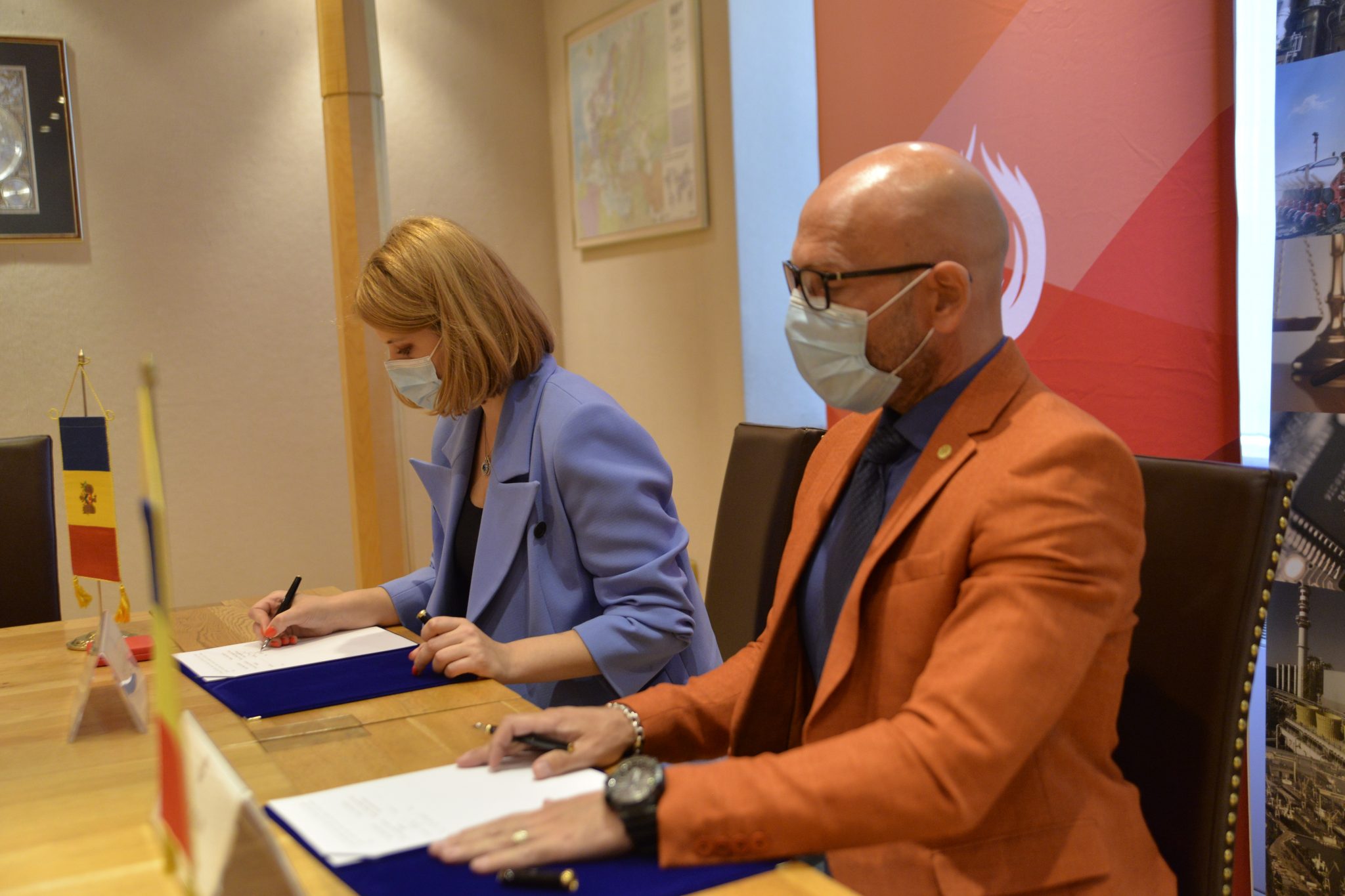
The Chamber of Commerce and Industry of Romania (CCIR) and the National Office for Vine and Wine (NOVW) of the Republic of Moldova signed, last week, a memorandum of cooperation on organizing joint promotional activities in the markets of common interest, as the CCIR announced.
China, Japan or the USA are just some of the markets targeted by the Romanian and Moldovan institutions. The memorandum also involves advertising activities for wines from common indigenous varieties, promoting the oeno-tourist region, developing a tourist route in the two states, exchange of experience, study visits, and mutual support in identifying new export opportunities. “We are very confident that this collaboration between our organizations will lead to sustainable economic growth and a higher degree of well-being among Moldovans and Romanians,” claimed Deputy Secretary-General of CCIR, Bogdan Visan.
On the other hand, Director of the NOVW, Cristina Frolov, declared that no open competition with Romania is aimed at the governmental level of the Republic of Moldova. “This request for collaboration is a consequence of the partnership principle. Romania imports 10-12% of the wine it consumes, and we want to take more from this import quota. Every year, the Romanian market grows by approximately 2.8%, as it happened in 2020, and we are interested in taking a maximum share of this percentage of imported wines without entering into direct competition with the Romanian producer,” the Moldovan official said. She also mentioned that Moldova aims at increasing the market share of wine production by at least 50% compared to 2020, and the number of producers present on the Romanian market – by at least 40%.
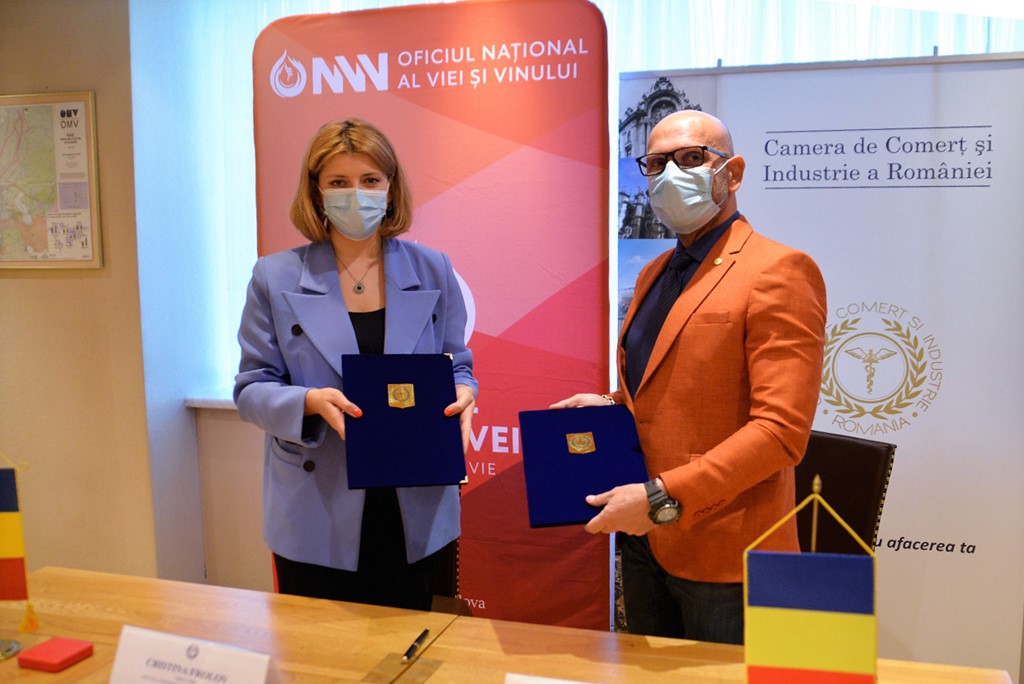
Source: ccir.ro
**
According to the data of the Romanian National Trade Register Office, the total value of Romania-Moldova trade was 1.7 billion euros at the end of last year and over 805 million euros at the end of May 2021. In July 2021, there were 6 522 companies from the Republic of Moldova in Romania, with a total capital value of 45.9 million euros.
The data of Moldova’s National Office of Vine and Wine showed that, in the first 7 months of 2021, the total quantity of bottled wine was about 27 million litres (registering an increase of 10% as compared to the same period last year), with a value of more than one billion lei, which is 32% more than the same period last year. Moldovan wines were awarded 956 medals at 32 international competitions in 2020.
Photo: ccir.ro
Economy
Moldova’s hope to be a top walnut exporter and its main difficulties

The Republic of Moldova has perfect weather conditions for growing walnut trees, that creating a great potential of walnut production and trade, especially on international markets, where the demand is way higher than the product’s supply. National and international experts believe that the country’s walnut production industry is on the verge of important transformations, which could lead to increased yields, quality and competitiveness worldwide.
According to authorities, Moldova exports 34-35 thousand tons of walnuts in shell, which is about 7% of the total export of fruit and 5% of the total export of horticultural products. The export value is assessed as being $120 million, that being 57-60% of the total fruit export value and about 50% of horticultural export value. Most of walnut crops are exported to the EU countries, such as France, Germany, the Netherlands, Romania and Austria. The country’s exports were among the world’s top 10 when it comes to the highest dollar value of the product during 2020.
Viorel Gherciu, Minister of Agriculture and Food Industry, pointed out that the production in the domestic walnut industry has increased by 55% in the last five years, which ranks Moldova among the main producers in the world.
“The biggest opportunity for this industry is that we are in the geographical proximity of the largest walnut import area in the world, which is the European Union, with almost 40% of total imports in the world. We are on the EU border, with privileged relations, with an Association Agreement. We already enjoy a good relationship in working with European importers, they trust our processors. A very close collaboration has been created and this is, in fact, the guarantee for those who invest in the area,” claimed the president of the Walnut Producers Association, Oleg Tirsina.
The data provided by the National Bureau of Statistics show that there are 34.7 thousand hectares of walnut plantations in the country. 20.90 hectares are represented by orchards. 75% of planted orchards are formed of old varieties trees. 30-35% of the exported production comes from orchards, the rest comes from individual farmers and plantations along the roads. This means that the quality of walnut production is not at its maximum potential. Developing commercial plantations through orchards modernization and extension of walnut varieties would provide double yield and better quality, experts say.
Governmental support in the form of subsidizing solutions, foreign investments and credit options are indispensable for the industry development. One of the financing options is the credit line of the European Investment Bank Project. Since 2016, 15 producers and processors of nuts, almonds and hazelnuts have benefited from these loans with the total amount of investments worth 8.7 million euros. A further extension of the project would provide another 60 million euros for the modernization of the horticultural sector in general and for harvesting organic walnuts in particular.
Photo: heymoldova.com


